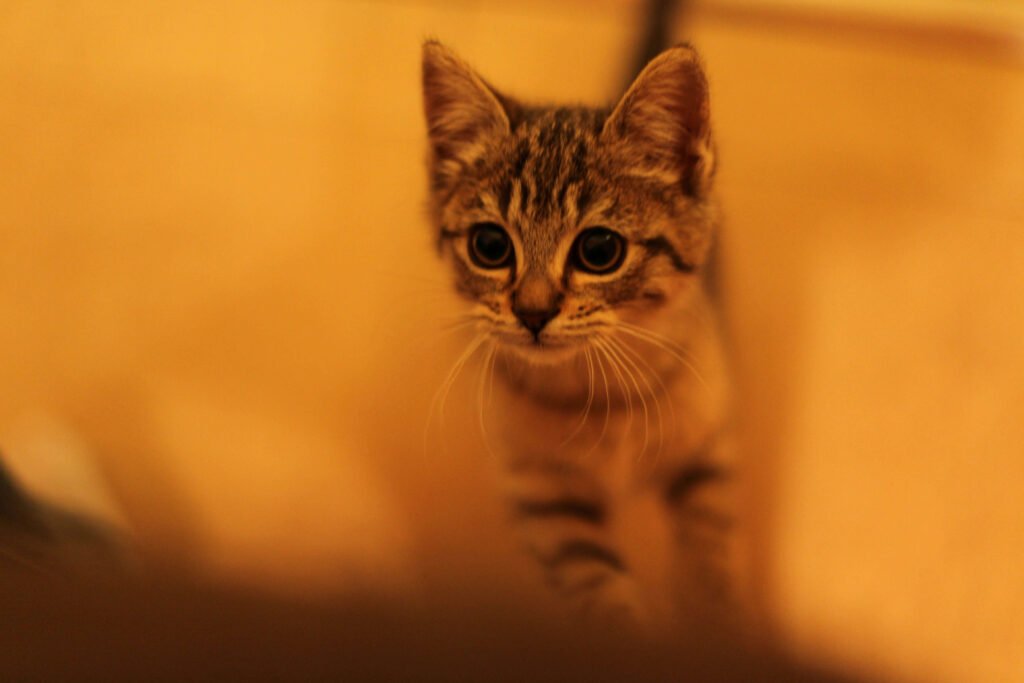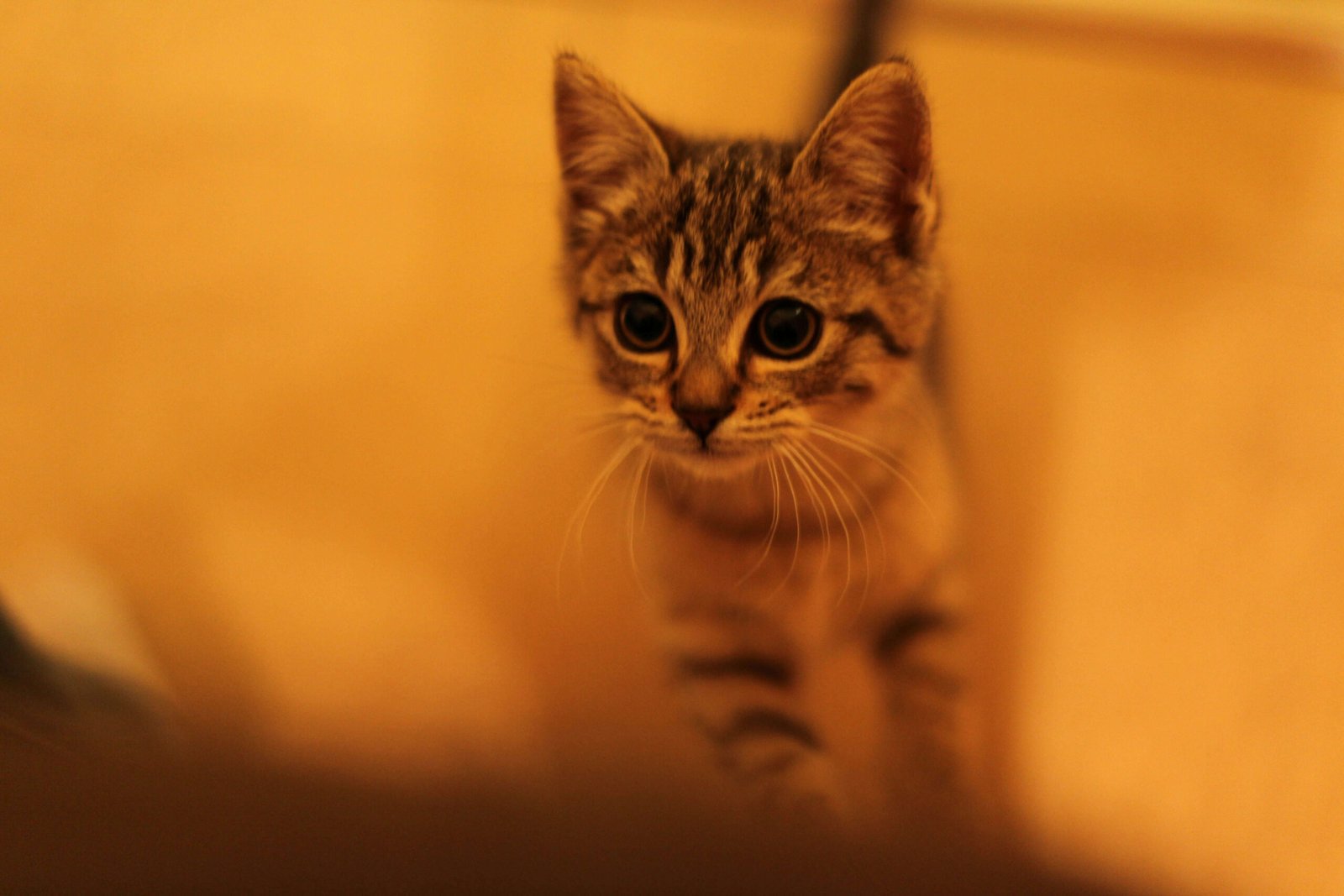Why Is My Cat Flicking the End of Their Tail? Decoding This Quirky Behavior
Cats are fascinating creatures, full of quirks and unique behaviors that often leave us scratching our heads. One such behavior is when your cat flicks the end of their tail. Whether it’s a subtle twitch or an energetic swish, this movement can mean a variety of things depending on the context. Understanding what your cat is trying to communicate can strengthen your bond and help you respond appropriately. In this blog post, we’ll explore the reasons behind this behavior, decode its meanings, and provide tips for interpreting your feline friend’s tail language.
What Does Tail Flicking Mean? Common Interpretations
A flicking tail is one of the many ways cats express their emotions and intentions. From excitement to irritation, tail movements can tell you a lot about how your cat is feeling at any given moment. Here are some common interpretations of this behavior:
Excitement or Anticipation :
A gently flicking tail might indicate that your cat is excited, such as when they see their favorite toy or hear the sound of food being prepared.Irritation or Annoyance :
If the flick becomes more pronounced or rapid, it could be a sign that something is bothering your cat, like a loud noise or unwanted attention.Playfulness or Hunting Instincts :
Cats often flick their tails when they’re in “hunting mode,” stalking toys or imaginary prey around the house.Stress or Overstimulation :
A flicking tail combined with flattened ears or dilated pupils may signal stress or overstimulation during petting or interactions.Discomfort or Pain :
If your cat repeatedly flicks their tail without an obvious trigger, it could indicate discomfort or even pain in their body.
Understanding these nuances can help you better interpret your cat’s mood and respond accordingly. Always pay attention to other body language cues to get the full picture.
How to Respond When Your Cat Flicks Their Tail
Knowing why your cat flicks their tail is only half the battle; the next step is learning how to respond appropriately. Depending on the situation, your reaction can either calm your cat or escalate their emotions. Here’s a guide to handling tail flicking behavior:
Observe Before Acting :
Take a moment to watch your cat’s overall body language before intervening. This will help you determine whether they’re happy, annoyed, or stressed.Stop Petting if Needed :
If your cat starts flicking their tail while being petted, it might mean they’ve had enough. Respect their boundaries and give them space.Redirect Energy into Play :
For playful tail flicking, engage your cat with interactive toys to channel their energy positively.Minimize Stressors :
Identify potential stress triggers in your environment, such as loud noises or unfamiliar guests, and try to reduce them.Consult a Vet if Unsure :
Persistent or unusual tail flicking could indicate underlying health issues. Schedule a vet visit to rule out medical causes.
By responding thoughtfully, you can ensure your cat feels understood and supported, strengthening your bond in the process.
Check this guide 👉The Unique Charm of Cats Without Tails: Best 7 Tips!
Check this guide 👉Cat Wagging Tail While Sleeping: Best 7 Expert Tips!
Check this guide 👉Why Is My Cats Tail Swollen at the Base? Best 7 Tips!

Possible Causes of Tail Flicking | How to Address Each Cause |
|---|---|
Excitement or anticipation | Engage in play or offer treats |
Irritation or annoyance | Remove the source of irritation |
Playful hunting instincts | Provide interactive toys |
Stress or overstimulation | Create a calm, quiet environment |
Discomfort or pain | Consult a veterinarian |
The Role of Tail Language in Cat Communication
A cat’s tail is a powerful tool for communication, conveying a wide range of emotions and intentions through subtle movements. Understanding tail language goes beyond just noticing a flick—it involves recognizing patterns and combinations of signals. Here’s what you need to know:
High Tail with a Slight Curve :
Indicates confidence and contentment, often seen when greeting humans or other pets.Puffed-Up Tail :
Signals fear or aggression, usually accompanied by hissing or growling.Slow Swishing Tail :
Suggests focused concentration, often observed during hunting or stalking behavior.Low Tail with Quick Flicks :
Reflects unease or defensiveness, especially in unfamiliar or threatening situations.Wrapped Tail Around Their Body :
Shows relaxation or a desire for warmth and security, commonly seen when cats nap.
Learning to read these signals will deepen your understanding of your cat’s emotional state and improve your ability to care for them effectively.
Tips for Bonding Through Tail Observations
Once you’ve mastered the basics of tail language, you can use this knowledge to build a stronger connection with your cat. Tail flicking, in particular, offers opportunities to engage and interact meaningfully. Here are some bonding tips based on tail observations:
Respect Personal Space :
If your cat’s tail flicks while you’re petting them, take it as a cue to stop and give them space.Engage in Interactive Play :
Use wand toys or laser pointers to mimic prey movements, encouraging natural tail flicking during playtime.Reward Positive Behavior :
Offer treats or praise when your cat displays relaxed tail movements, reinforcing positive associations.Create Safe Spaces :
Provide cozy hiding spots where your cat can retreat if they feel stressed or overwhelmed.Monitor Changes in Behavior :
Keep track of any unusual tail flicking patterns, as sudden changes may indicate health concerns requiring veterinary attention.
By incorporating these strategies, you can foster trust and enhance your relationship with your furry companion.
Common Misinterpretations of Tail Flicking
While tail flicking is a fascinating behavior, it’s often misunderstood by cat owners. Misinterpreting these signals can lead to confusion or even unintended stress for your feline friend. Here are some common misconceptions and how to address them:
Assuming All Tail Flicks Mean Playfulness :
Not all tail flicks indicate play; sometimes they signal irritation or discomfort instead.Ignoring Subtle Cues :
A slight flick at the tip of the tail might be overlooked, but it could mean your cat is becoming overstimulated.Thinking It’s Always a Sign of Happiness :
While gentle flicks can reflect contentment, rapid or forceful flicks often suggest the opposite.Believing It’s Purely Random :
Tail flicking is rarely random—it’s almost always tied to your cat’s emotions or environment.Failing to Check for Medical Issues :
Persistent tail flicking without an obvious cause may point to underlying health problems that need attention.
By avoiding these misinterpretations, you can better understand what your cat is trying to communicate and respond appropriately.
Fun Facts About Cat Tails
A cat’s tail isn’t just a tool for communication—it’s also an incredible part of their anatomy with fascinating functions. Here are some fun facts about cat tails that highlight their importance:
Balance and Agility :
Cats use their tails to maintain balance while walking on narrow surfaces or leaping through the air.Expressing Social Status :
In multi-cat households, tail positions can signal dominance, submission, or neutrality among feline companions.Temperature Regulation :
The tail helps regulate body temperature by releasing heat during warmer weather.Unique Patterns and Markings :
Each cat’s tail has distinct markings or color patterns, making it as unique as a fingerprint.Tailless Breeds Still Communicate :
Even breeds like the Manx, which lack tails, have adapted ways to express themselves using other body parts.
These facts underscore just how versatile and essential a cat’s tail is—not only for communication but also for survival and individuality.
How to Encourage Positive Tail Movements
If you want to see more positive tail movements from your cat—like those associated with happiness or relaxation—you can take steps to create a supportive environment. Here are some tips to encourage healthy tail behaviors:
Provide Enrichment Activities :
Toys, scratching posts, and climbing trees can keep your cat mentally stimulated and physically active, reducing stress-related tail flicking.Establish a Routine :
Cats thrive on predictability, so maintaining a consistent feeding, play, and sleep schedule can help them feel secure.Offer Safe Spaces :
Create cozy hideaways where your cat can retreat when they feel overwhelmed or need downtime.Use Calming Scents :
Products infused with catnip or synthetic pheromones can promote relaxation and reduce anxious tail flicking.Practice Gentle Interaction :
Approach your cat calmly and avoid sudden movements to prevent triggering defensive or agitated tail responses.
By fostering a nurturing and predictable environment, you can minimize negative tail flicking and encourage behaviors that reflect your cat’s happiness and well-being.
Frequently Asked Questions About Cat Tail Flicking
Why does my cat flick their tail while lying down?
This could indicate they’re relaxed but still alert, or they might be dreaming and mimicking hunting behaviors.
Should I worry if my cat’s tail flicks constantly?
Occasional flicking is normal, but persistent or exaggerated movements may warrant a vet check to rule out pain or stress.
Can tail flicking be a sign of happiness?
Yes, gentle tail flicks can signal excitement or anticipation, especially during play or mealtime.
What should I do if my cat’s tail flicks aggressively?
Back off and avoid further interaction until they calm down, as aggressive flicking often indicates irritation or overstimulation.
Does breed affect tail flicking behavior?
While all cats use their tails to communicate, certain breeds may exhibit more pronounced or frequent flicking due to temperament differences.
Final Thoughts: Understanding Your Cat’s Tail Language
In conclusion, a flicking tail is far more than just a random movement—it’s a window into your cat’s mind. By paying close attention to this behavior and combining it with other body language cues, you can gain valuable insights into their emotions and needs. Remember, every cat is unique, so patience and observation are key to truly understanding your feline companion. With the tips and knowledge shared in this article, you’re now equipped to decode your cat’s tail flicks and strengthen your bond in meaningful ways. So the next time you notice that telltale flick, take a moment to appreciate the rich communication happening right before your eyes!
Understanding Cryptosporidium in Cats: Best 7 Expert Tips! – Spot symptoms, treat safely, and stop parasite spread in your home.
Understanding Cryptosporidium in Dogs: Best 7 Expert Tips! – Learn symptoms, treatment & prevention for this stubborn gut parasite.
Understanding Syringomyelia in Cats: Best 7 Expert Tips! – Recognize signs, manage pain, and support your cat’s neurological health with vet-backed guidance.
Understanding Syringomyelia in Dogs: Best 7 Expert Tips! – Expert insights on symptoms, MRI diagnosis, pain management & quality of life.





